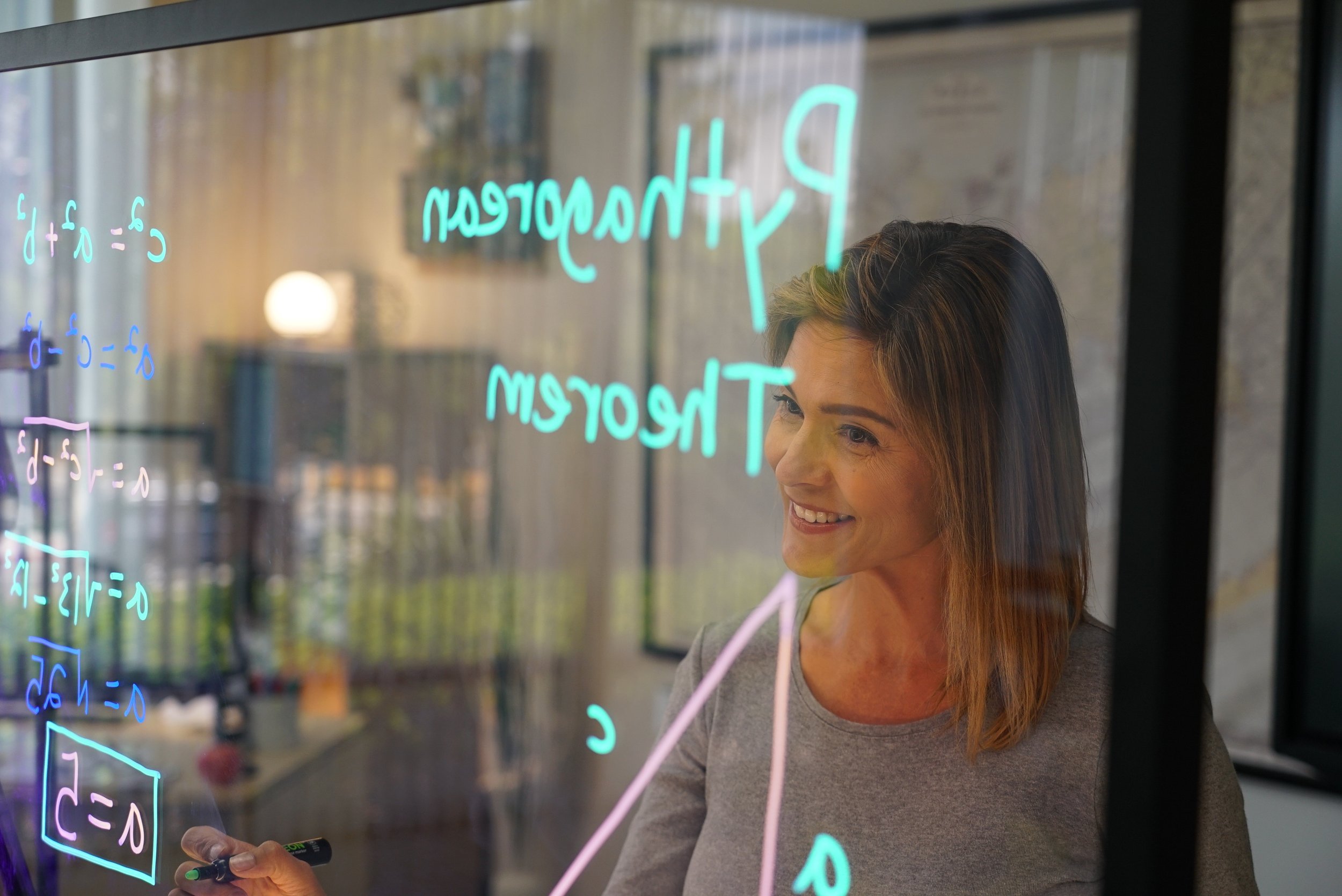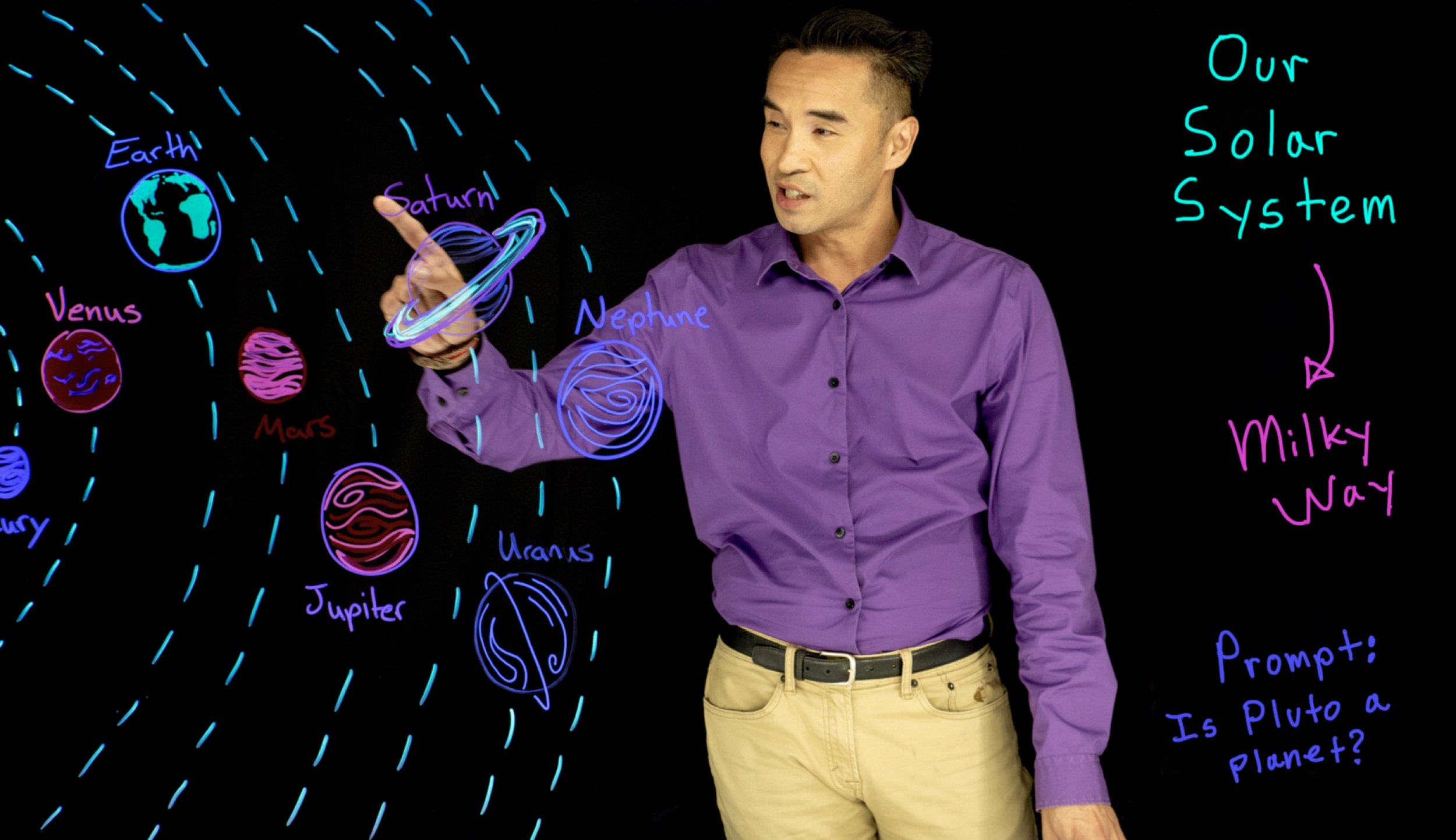
Research Shows…
Students want to see your face.
eGlass simulates eye-to-eye contact with each and every student, drawing them into your lesson and significantly boosting student engagement. This one-to-one connection creates a social-emotional partnership between you and your students.
According to The Cognitive Theory of Multimedia Learning (CTML), “when the learner feels social partnership with the instructor, the learner will exert more effort to understand what the instructor is saying, which results in better learning outcomes” (Mayer, 2017).
In an informal 2020 study, students expressed preference for lightboard pedagogy over a traditional PowerPoint presentation at a 6:1 ratio.
Your facial expressions and eye- contact not only keep your students engaged, but also contribute to their Social & Emotional Learning (SEL).
The Cognitive Theory of Multimedia Learning (CTML), Mayer, 2005; Mayer, Heiser, & Lonn, 2001; Mayer & Moreno, 2003

eGlass makes learning easier…
According to Cognitive Load Theory (CLT), students’ working memory is only able to hold a small amount of information at any one time (Sweller, 1988). When a teacher turns their back to write on whiteboard or interactive display, new challenges get introduced that increase cognitive load.
eGlass reduces the burden on working memory by combining auditory and visual information in an engaging way, better-converting working memory into long-term memory, which is the holy grail of building knowledge.
Without eGlass
Teacher turning their back
Teacher blocking writing
Can’t see what part of the board teacher is looking at
Not able to see teacher’s facial expression
With eGlass
Teacher facing students
Not blocking writing
Can see exactly where teacher is looking
Can see teacher’s facial expressions
With eGlass, students will spend less time processing information, and more time building knowledge.
It solves the “split attention” problem.
Instructional Split Attention occurs when learners are required to split their attention between several sources of physically disparate information (like a lecturer and their whiteboard). To avoid this, sources of information should be physically and temporally integrated, reducing students’ extraneous working memory load and freeing up mental resources for learning.
(The Cambridge Handbook of Multimedia Learning, 2005).

Enable Essential Non-Verbal Learning Cues
When students can see your face as you’re teaching, they have the ability to follow your gaze and see precisely what you’re looking at. Plus, you can also use gestures more effectively.
According to the Signaling (or Cuing) Principle, multimedia learning materials are more effective when cues are added that guide learners’ attention to the relevant elements of the material.
(The Cambridge Handbook of Multimedia Learning, 2005)
Gaze
Students will follow your eyes to see what you’re looking at.
Pointing
Combined with your gaze, pointing further directs attention.
Gesturing
Or use physical tools (like a protractor) in conjunction with your drawings.
Mr. Samaniego, AKA “The Math Sheriff”
5th Grade Teacher, San Diego, CA
Classroom management just got a whole lot easier.
Never turn your back again.
Use eGlass at the front of the room to see your students reactions and gauge their understanding.
Or setup eGlass behind your students, and you’ll (literally) have eyes in the back of your classroom.
See their reactions, gauge their understanding, and adapt your lessons.

Teacher Shortage?
We can help.
The Ultimate Teacher Duplicator
Whether it be a global pandemic, budget cut, or a surge in retirement, there is no greater threat to education than the growing teacher shortage. eGlass is the perfect hybrid tool to provide a front-row experience to any student, no matter the distance. Thanks to its built-in camera and microphone, eGlass can be used synchronously or asynchronously - in-class or online.
Many districts that are lacking in advanced placement, foreign language, or other specialty teachers use eGlass to multiply their teacher force and bridge their digital divide.
Plainfield Public Schools, a New Jersey district, is using Glass and Google Meet to duplicate their Algebra teachers.

And let’s be clear:
Students love eGlass.












